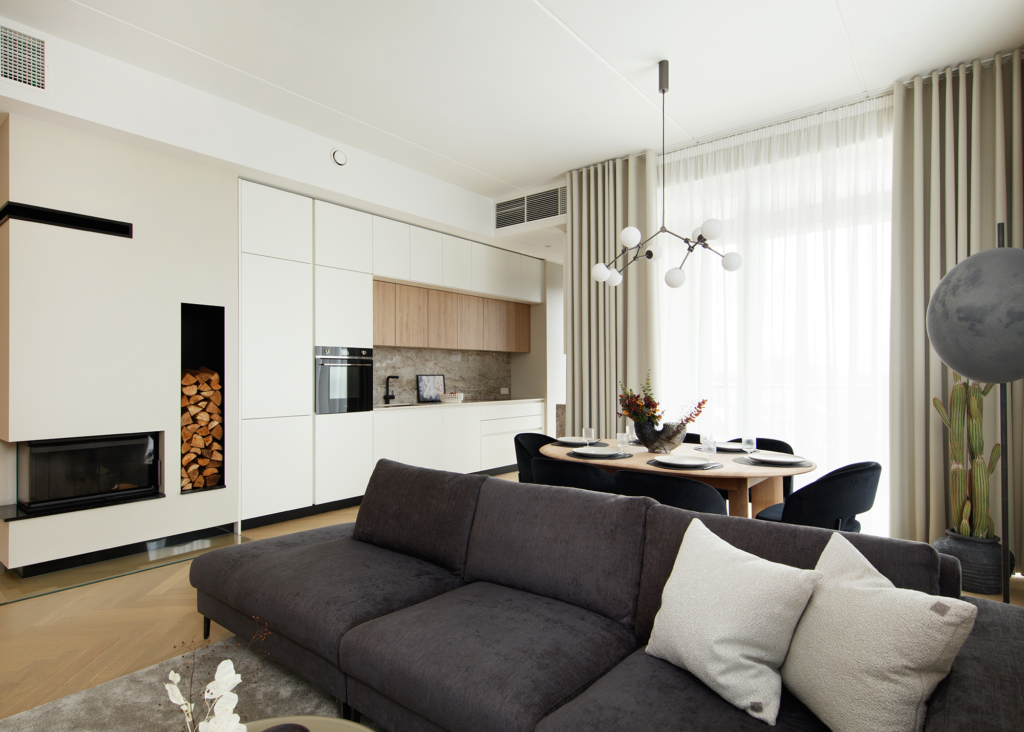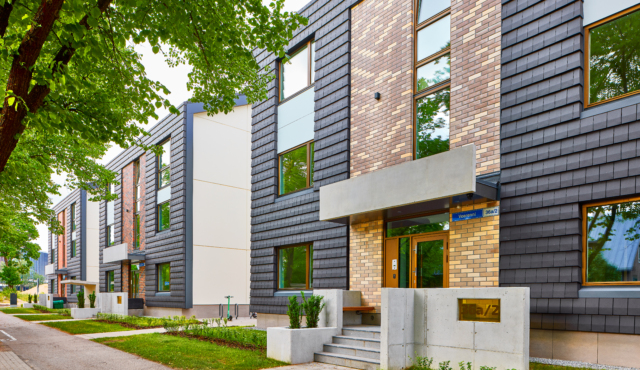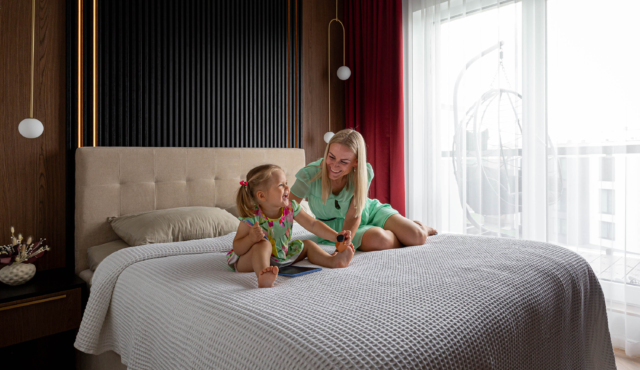Forced ventilation ensures good air quality in the home

Ventilation introduces fresh air into indoor spaces. For well-being and health, air should be exchanged throughout the home continuously.
In older apartment buildings, it is common for air exchange to take place through natural ventilation – fresh air enters the apartment through openings in the walls or windows and is pulled out of the apartment by the natural draught through flues connected to the kitchen and bathroom.
It is important to note that in some cases, a natural ventilation system may start to work in reverse and blow air into the room through the exhaust flue. If a block of flats has shared extraction ducts for all the apartments, airborne coronavirus particles from one flat can reach others – in the same way as a neighbour’s cooking odours sometimes spread throughout the building. That is why it is essential to modernise ventilation systems when renovating older apartment buildings.
In new apartment buildings and in properly renovated older ones where a mechanical or forced ventilation system is installed instead of natural ventilation, there is no risk of air leakage from one apartment to another when the system is working correctly.
Forced ventilation ensures good air quality and provides extra comfort
For forced ventilation, air exchange is enhanced by ventilation devices that control the direction of air exchange and regulate the intake and exhaust flow rates. Some devices also control the circulating air temperature.
Whereas a decade ago, forced ventilation was mainly provided by fresh-air dampers in walls or window frames, and air was extracted by means of exhaust fans located in the exhaust flues, nowadays much more efficient home ventilation units are installed in each apartment or as centralised systems for the entire building. Fresh air from intakes in the facade or on the roof is led through the ventilation unit and filtered into the apartment; the exhaust air is extracted through separate exhaust ducts.
The advantage of an in-apartment unit is that it allows the ventilation level to be adjusted in the apartment at any time. However, the apartment owner also has to take care of the maintenance and replacement of filters. With one central ventilation unit, the building manager will ensure the maintenance and operation of the unit. But this means that the air exchange level will be the same throughout the building, and the indoor climate cannot be separately selected for each apartment.
A further advantage of modern ventilation over natural ventilation is the use of a heat exchanger, which allows the incoming air to be heated via the heat extracted from the room. It helps to reduce heating costs and ensures a more even temperature throughout the apartment. For example, with minus 20 degrees outside, it is uncomfortable to sit by a window as cool air is blowing into the apartment from the air flap in the window frame via natural ventilation. But if fresh air is pre-heated and blown into the apartment through a forced ventilation unit and through inlets on the internal walls, the temperature is more even throughout the apartment.
In the case of apartment buildings, the use of a ventilation unit has another significant advantage over both natural ventilation and the previous generation of mechanical ventilation using fresh air dampers – no external noise enters the apartment through the air intake vents. Filters in the ventilation system trap dust and other contaminants in the outside air before it reaches the apartment.
The proper planning and maintenance of a ventilation system are essential
If an apartment building has a properly functioning forced ventilation system, cleaner air enters the apartment and the risk of viruses entering through the ventilation system is reduced. For this reason, it is very important to pay attention to the correct maintenance of ventilation units and the timely replacement of filters. It is also important that the ventilation system is designed and built according to best practice.
To ensure a healthy indoor climate, the air in the apartment should be changed once every two hours. In Merko’s apartment buildings with forced ventilation, all the fresh air for the building is taken in through air intake areas in the building’s external walls or roof, cleaned and directed to the apartments through separate ducts; the exhaust air is directed out of the building through separate exhaust ducts for each apartment. In this way, the indoor climate in one apartment cannot be affected by what is happening in others.
To ventilate the kitchens in Merko apartments, we mostly use a system where each kitchen hood in each apartment has a separate exhaust duct to the roof, which almost eliminates the possibility of food odours moving between neighbouring apartments. If, as an alternative, the exhausts of several apartments are connected to the same main shaft, electric valves are used on the ducts from different apartments to prevent air from moving in the wrong direction.
Regularly maintained ventilation equipment, clean air entering the apartment and proper air exchange in all rooms are essential for a healthy indoor climate. It is worth remembering, however, that if you are in the same apartment as someone who is coronavirus positive, you may be infected by close contact rather than airborne virus particles. Therefore, in the event of an outbreak, even in force-ventilated dwellings, the sick person must be isolated from other residents, and surfaces regularly disinfected to prevent the spread of the virus.
Just as every apartment is ventilated, it is important to ventilate the public spaces (stairwells, garages, storage rooms, etc.). This is why all common areas in Merko’s new apartment buildings are mechanically ventilated. Continuous ventilation ensures adequate air exchange and fresh air. We recommend using the stairs instead of a lift to reduce contact with other people during the virus season.
What to keep in mind in an apartment building with forced ventilation during a virus outbreak?
When ventilation units are located in each apartment
- Check that the air exchange in your apartment is working properly. Hold a thin sheet of paper near the extraction valve or grille. If the airflow pulls the paper against the exhaust cover, ventilation is adequate. Be sure to perform this check if the mirrors in the bathroom remain foggy or if there does not seem to be enough fresh air in the apartment.
- Do not turn off the ventilation system when you leave home. The ventilation system must always operate at least at minimum speed.
- Regularly replace the filters in the ventilation unit. Instructions for changing filters and other maintenance can be found in the owner’s manual.
- Ventilate the rooms frequently.
- If you need help, contact your building manager.
When the building uses a central ventilation unit located in a common area
- If there doesn’t seem to be enough fresh air in the apartment or if the mirrors in the bathroom remain foggy, pass this information on to the housing association and the building manager so that they can check the ventilation system.
- Contact the housing association and the building manager to ensure that the ventilation system is regularly and properly maintained.



